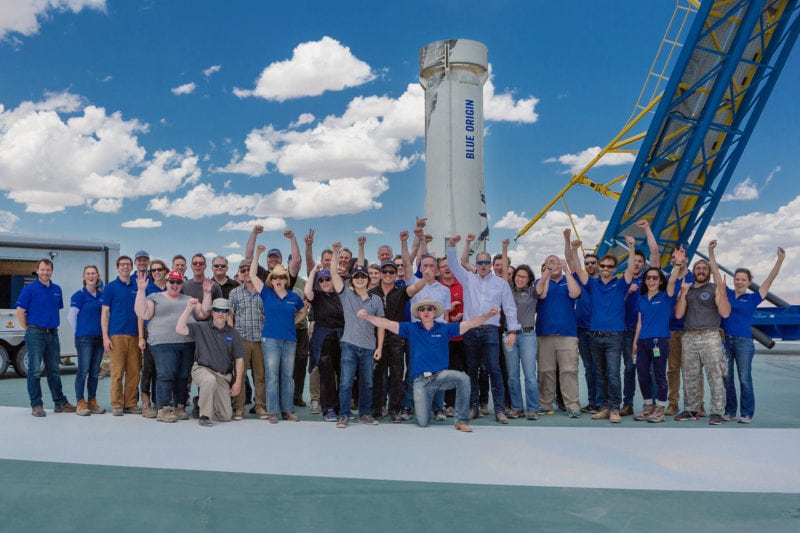Blue Origin Reaches its Apogee Target for New Shepard

Blue Origin team celebrates the success of Mission 8 after New Shepard’s eighth flight. Photo Credit: Blue Origin
A space vehicle that could one day be used for manned space travel has flown for the eighth time. In a successful launch, dubbed Mission 8 (M8), the New Shepard from Blue Origin, the company founded by Amazon’s Jeff Bezos, blasted skywards from the firm’s West Texas Launch Site on Sunday. The crew capsule reached an apogee of 351,000 feet, the altitude that Blue Origin has been targeting and its highest test flight yet.
The New Shepard system is a Vertical Takeoff, Vertical Landing (VTVL) space vehicle design to be reused and combines a booster and capsule. From launch, the vehicle accelerates for 150 seconds before the engines cut off. The capsule separates from the booster to coast quietly into space. After a period of freefall, the booster completes a rocket-powered vertical landing at about 5mph. The capsule lands softly under parachutes. Both parts are reusable.
The M8 lift-off marked the second time that Blue Origin’s test dummy Mannequin Skywalker flew to space to conduct astronaut telemetry and science studies. M8 also carried commercial research payloads, each outfitted with a custom Blue Origin Payload Locker to provide structural, power, and data interfaces throughout the flight.
Payload customers onboard the New Shepard include NASA, the German Aerospace Centre (DLR), Solstar, University of Bayreuth, Center of Applied Space Technology and Microgravity at the University of Bremen, Otto von Guericke University and the University of Duisburg-Essen.